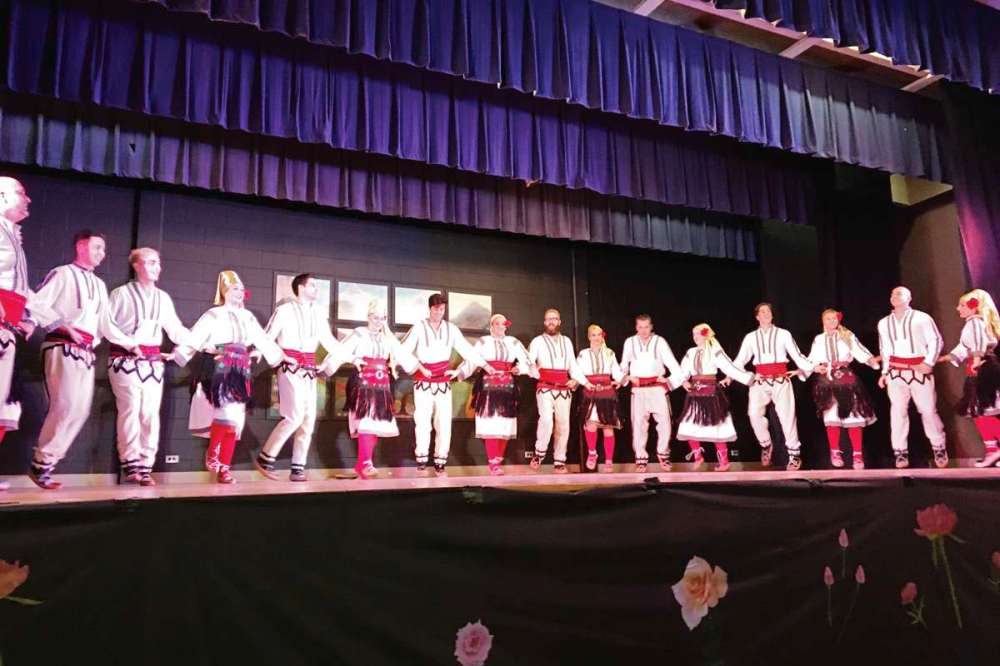Dancing key to the fun at Serbian pavilion
Advertisement
Hey there, time traveller!
This article was published 23/07/2018 (2655 days ago), so information in it may no longer be current.
If you’re planning to take in the Serbian “Kolo” pavilion at Folklorama this year, Tatjana Draskovic has a word of advice: “Come hungry!”

Celebrating its 12th year, the Serbian “Kolo” pavilion represents traditions of Serbian people from different parts of Balkans (whereas the Serbian Pavilion Beograd is focused on Serbia proper). The pavilion runs from August 5 to 11 at the St. James Civic Centre (2055 Ness Ave.).
“The more familiar we are with our own traditions and the traditions of others, the more understanding and respect we develop for each other,” Draskovic, media and VIP group tour chair for the pavilion, said.
A big part of getting to know the culture is sampling the food. Guests can feast on some traditional favourites, including cabbage rolls with sauerkraut and meat, stuffed peppers, “pite” (pies made with thin pastry filled with meat, cheese, or spinach and a cheese mixture). There are also vegan options, including baked beans and rice, and vegetable stew. And of course, you can’t forget the popular dessert, “palacinke”, which are crepes with Nutella.
Wash it down with the traditional Serbian brandy-like beverage called “rakija”, which is a strong drink made by fermenting different fruits. Plum or “sljivovica” is a top choice, but there is a selection of others made of pear, apricot and quince.
“The Folklorama festival is not only unique to Winnipeg, but also on the world stage as it provides an opportunity for our ethno-cultural communities to come together year after year in celebration of what makes us distinctly Canadian — pride in our diversity,” said Teresa Cotroneo, acting executive director for Folklorama.
Organizers of the Serbian “Kolo” pavilion take a tremendous amount of pride in their entertainment.
“We do try whenever possible to teach the audience some simple traditional dance steps,” said Draskovic, who came to Winnipeg in May 1995 as a refugee from the former Yugoslavia. “Traditional dances are a big part of life to this day. A simple version of it is part of every party, wedding, or any special occasion. If you ever find yourself invited to a Serbian wedding, you will be missing out unless you can get in circle with the rest of the party and dance. That is what Kolo means — dancing together in a circle, while holding hands.”
All of the dancers and performers are local Winnipeg children. Most of the Kolo Dance Group have been dancing together for 10 or more years, are very skilled and have performed at a number of the international folk dance festivals.
“We often get asked if they are a group visiting from Serbia,” said Draskovic, noting the calibre of talent. “Serbian dancing is a cross between fast steps you see in Irish dancing and some acrobatics and formations you see in Ukrainian dances. It’s very lively and entertaining.”




